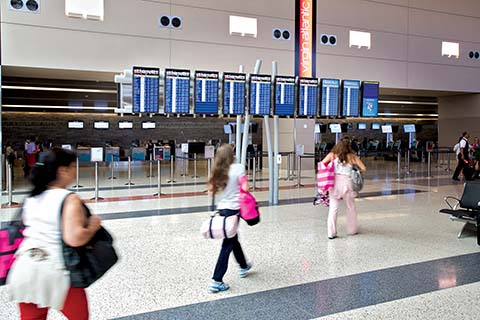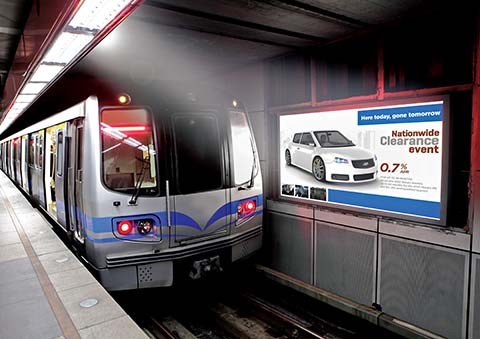Multi-purpose networks
The potential uses of digital signage in a transportation facility may be very numerous because of the facility’s many business goals.

Flight information display systems (FIDSs) are among the most common implementations of digital signage in the transportation sector.
The primary purpose of transporting commuters efficiently, for example, is supported by displaying schedules, emergency alerts, procedures, wayfinding information and visual paging. Secondarily, as a gateway to the local community, the facility may use digital signage to promote tourist attractions, future travel opportunities and reward programs. Third-party tenants, meanwhile, use digital signage to enhance passengers’ dwell-time experience by promoting food and beverages, shopping and entertainment, which in turn help generate additional revenue for the facility.
Indeed, one of the benefits of digital signage to airports has been to increase the revenue earned per passenger. At the same time, the medium can enhance customer service, alleviate passengers’ anxiety by reassuring them with the right information in the right place, help make business processes more efficient and build customer loyalty.
Incorporating interactivity
One growing digital signage trend in the transportation sector is the installation of interactive video walls, which can engage commuters in large, open areas. Assembling an array of narrow-bezel LCDs for this purpose is less expensive than buying one giant screen. Depending on the application, single- or multi-touch—or even gesture-based—interactivity can be supported.
Interactivity can also be offered through the display of Quick Response (QR) codes, near field communication (NFC) or other technologies for connecting with mobile devices. In the U.K., for example, retail chain Tesco set up refrigerator-shaped kiosks at Gatwick Airport that allowed travellers to order groceries for delivery to their homes. Integrating both touch screens and scannable codes, the kiosks saw nearly 3,800 touch activations over two weeks, with a nearly five-minute average interaction time among passengers, 50 per cent of whom made a purchase.
Another way to foster connectivity is to tie messaging to social media, encouraging passengers to use Twitter, Facebook or other social networks to receive relevant updates in the future. In New York, N.Y., for example, a one-month interactive digital signage campaign in Times Square for New York Water Taxi (NYWT) prompted tourists to take their photo at a touch-screen kiosk, share it online and then buy tour tickets from their own devices. Nearly 12,150 touch activations throughout the campaign led to sales of more than 3,750 tickets at $20 U.S. each.
Leading the way
In many ways, airports have led the way in optimizing the use of digital signage. They tend to earn more digital out-of-home (DOOH) advertising revenue than shopping malls, for example, even though the numbers of people who pass through them are roughly the same (see Sign Media Canada, September 2014).
Today, ground-based transportation facilities are moving in the same direction, replicating the airport business model so as to enjoy the same long-term sustainability funding. While their efforts in North America have been limited so far, many European train stations have successfully mimicked airports’ digital signage infrastructure.
As the prices of digital signage technologies continue to fall, the medium will continue to become achievable in more and more environments, especially those within the transportation sector, where customers are enjoying a richer overall experience, rather than simply rushing to make their trip.
Keith Yanke is senior director of product marketing for NEC Display Solutions. For more information, visit www.necdisplay.com.






